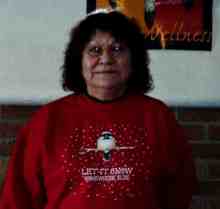ALS stands for "Amyotrophic Lateral Sclerosis." When a muscle has no stimulation, it "atrophies" or wastes away. "Lateral" is the area of the spinal cord where the nerves that work the the muscles, are located. As this area breaks down it leads to scarring or "sclerosis," in the region.
Amyotrophic Lateral Sclerosis, also known as Lou Gehrig's disease is a progressive disease, meaning that the person with ALS gets worse over time. Nerve cells in the brain and spinal cord control the muscles responsible for movement; like, walking. In people who have ALS these nerves break down and can no longer control the muscles. Without the stimulation and nourishment from the nerves, the muscles gradually weaken and atrophy (shrink). Lou Gehrig was a famous baseball player. He died from ALS in 1941.
SIGNS OF ALS
Early warning signs include tripping, stumbling and falling, or loss strength or muscle control in hands and arms, or trouble speaking, swallowing or breathing. Other symptoms are: muscle stiffness , twitching, muscle cramps, chronic fatigue or exaggerated reflexes. The muscles are affected, eventually leading to paralysis. People with ALS may have pain due to pressure sores, muscle cramps or joints that are limited in motion. ALS does not generally affect intelligence, bladder and bowel control, and sexual function nor the senses of touch, vision and hearing.
How do you know if you have ALS?
Anyone of any age or race can get ALS. About 1 in 50,000 people get ALS. ALS can affect people at any age, but most ALS cases begin between the ages of 40 and 70 with the average age being 55. A doctor makes the diagnosis after performing a variety of tests and exams. The diagnosis is made by ruling out other diseases and by meeting specific criteria for ALS. There is no one test for ALS.
How do you get ALS?
The cause of ALS is unknown, and research has not been able to link it to environmental or age-related factors. It is not contagious.
What can be done for people with ALS?
Treatment is directed toward relieving symptoms; e.g., the muscle twitching, the cramps and the excessive saliva that can occur as a result of ALS. Drugs, physical therapy, occupational therapy, swallowing and speech therapy, massage, and respiratory therapy are all used. Range of motion exercises are often recommended to reduce joint stiffness. Ventilators and feeding tubes are also used to support life as the weakness increases. There is no cure for ALS, and there is only one drug specifically designated for ALS. The drug is riluzole, brand name Rilutek.
What is the future of a person with ALS?
There is a very wide range in longevity, something like 2 months to 30 years, about half of ALS patients die within 18 months after diagnosis. Patients with positive attitude also tend to live longer than patients who are severely depressed. ALS patients who opt to get a feeding tube and go on a ventilator may live for many years.Without a ventilator to assist breathing, death is usually a result of insufficient oxygen. In most cases, ALS patients die peacefully, often in their sleep.
A lot of information on ALS can be found at the ALS Association website.
